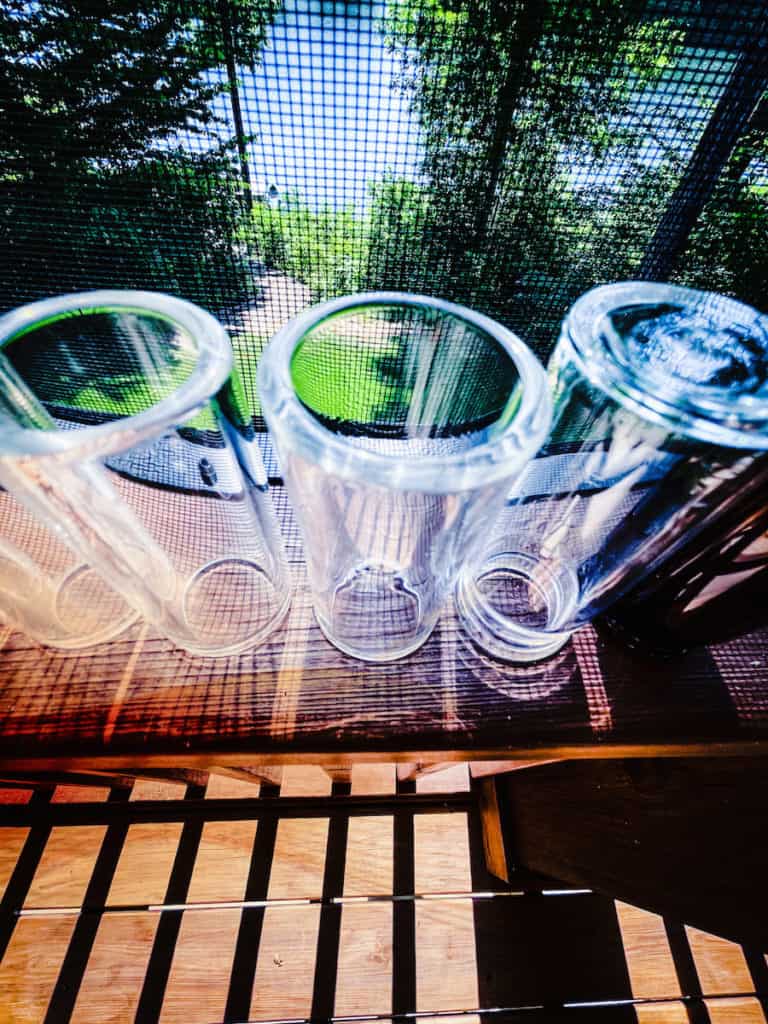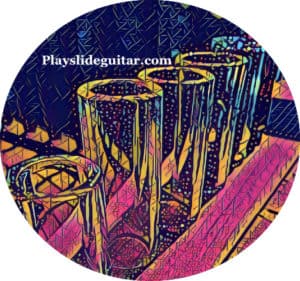As an Amazon Associate Playslideguitar.com earns from qualifying purchases.
One of the most distinctive and characteristic sounds of slide guitar, vibrato can add a lot of depth and articulation to notes. Like a singer’s voice, vibrato can accentuate subtle details within the phrasing of a musical idea.
There are numerous vibrato techniques and applications for slide guitar, but the essence of vibrato comes in its natural way of evoking feeling from notes.

Slide guitar has deep roots in blues music, and it is quite possible that the riffs and licks common in so much rock and blues music since the mid 1900s would be quite different and vacant without the bottleneck guitar’s role in blues expression.
Vibrato plays a large part in guitar expression and many forms of music, and slide guitar shines in its ability to embellish music with it.
Taking a deeper look at vibrato can reveal a lot about playing slide guitar…
What is Vibrato?
Vibrato is essentially taking a pitch, and slightly raising and lowering it in a manner that accentuates the note. This is often done in a quick, or more rapid manner, and the note is perceived as one pitch that is accentuated.
For instance, if you play a note on the guitar without moving your finger or slide, it will sound as a pitch. But as you begin to employ vibrato, this pitch becomes more energized with variation and expression. With vibrato, the note or pitch can come alive with feeling and added depth.
Singers and other instruments often use vibrato as well, and the tasteful use of it can be a great way to add nuances to notes and really make them speak. Every musician’s vibrato is an extension of their musical voice, and can add character and vibrancy to their playing.
Slide Guitar: A Passion for Vibrato
Slide guitar pairs so well with the use of vibrato, and this is in large part due to the slide’s natural ability to create it with fluidity on the guitar’s neck. Although it takes practice and there are subtle details to learn, creating vibrato with a slide is really just a matter of quickly moving the slide back and forth on a small area of the fretboard where the note is located.
A contributing part of bottleneck slide guitar gaining popularity in the earlier 1900s was the slide’s relatively simple and intuitive use on the guitar. Many beginners picked up slide guitar because it felt more natural and easy than fretting notes on guitar, which is ironic because nowadays many guitar players don’t focus on learning slide techniques because the technique may feel challenging. However, playing slide guitar and using vibrato is actually a genuine and simple extension of your musical voice, and the technique is easier to develop than it may seem.
Vibrato has a way of engaging notes, and adding excitement to them. This can be great for solos, riffs, licks, melodic developments, and harmonic applications. Perhaps the greatest asset of slide guitar and vibrato to music, is its ability to add more essence and detail to notes that are played within a song.
How To Create Vibrato With A Slide
As you gain more control over using the slide on the fretboard, your intonation will improve. You’ll also begin to have a balance and feel for how much pressure to put against the strings with your slide.
Once you are in a position on the fretboard and playing a note, you’ll have a graceful control over the note with your slide and this is where vibrato is often applied. Soon after you’ve picked the note, a slight back and forth movement of your finger (and naturally the hand, wrist, and arm to a degree) will create the vibrato.

The rate and intensity of your vibrato can vary greatly, and how you use it will depend on the musical situation and what you intend to express with the note. A slower tempo ballad, that has beautiful harmonic elements may benefit from a subtle and smooth vibrato (think like a saxophone player playing a sultry solo on a slow, romantic jazz ballad). A more rocking, blues tune that drives a listener to dance and groove will usually benefit from a more energized type of vibrato that has excitement and faster inclinations.
Vibrato takes practice, but the goal will be to make it feel natural. Really, there is no right or wrong way to use vibrato: it is really a matter of using it with taste and heart, and expressing how you feel at that moment with that note.
Different Slides for Vibrato
All slides are characteristic in their ability to produce vibrato, however each will have a different tonal effect that it creates with vibrato. A large part of these differences are the slides’ physical dimensions and materials.
Slides that are lighter in weight will require a different amount of physical movement of your hand and finger than a heavier slide such as D’Addario’s Rich Robinson Brass Slide (click to see on Amazon). The surface area of the slide that contacts the string will also affect the vibrato’s application. Although most slides are going to have a rounded contact area, the different diameters of the slides and their weights will affect the feel of the slide against the strings.

Oftentimes, the more rounded and smooth the slide is against the strings, the more the vibrato may reflect this. If a sharper, or more pointed slide surface area is used, it may be easier to produce an edgier type of vibrato. Although the type of slide used plays an important role in the tonality of the note, and not necessarily the technique of vibrato, the way a slide feels and behaves against the strings will affect the way you apply your vibrato.
Types of Vibrato: Developing Your Technique
Vibrato is often the tail-end expression of a note. For instance, usually a note is created with an attack or articulation, and then the note is further developed with the use of vibrato.
It is more common to play a note, and then add vibrato to it as it expands or decays through time in the music, than to play a note with the immediate use of vibrato being applied to it. Keep in mind that this process usually happens very quickly for each note.

For instance, a note will first be voiced as a foundation for the pitch, and then vibrato is applied as it builds or moves within the rhythm of the music. Each note is like a wave in the ocean, and you ride it with vibrato as it moves to shore. Some notes and waves are large and break rapidly, some are smooth and develop slowly as they move to shore. Your use of vibrato should adapt to the notes around you, working harmoniously with your musical environment.
Shaking the Slide
When you apply the slide against the strings to create a note, shaking it back in forth in a more linear fashion will yield a type of vibrato that is edgy, excited, and rocking. This is great for certain applications, and can be great for blues and rock ‘n roll, especially when an electric guitar with distortion is used.
Rolling and Stirring The Slide
Moving the slide in a more rounded, smooth type of motion can be another type of technique for creating vibrato. This method of “rolling” or “stirring” the bar against the strings can produce a warmer, deeper tone that has a creaminess and thickness to it.
Sometimes slower tunes, or the longer tail-end of notes can benefit from this type of vibrato technique. However, there are applications for this type of vibrato, as well as the shaking method, in all tempos and styles of music.

Distance and Speed of Vibrato
The distance you move back and forth at the note on the fretboard, along with the speed of doing so, are the main physical principles behind creating vibrato. Combine these with the type of motion described above (shaking, rolling, stirring, etc.) and there are infinite expressions to be created with vibrato.
However you decide to use vibrato with your slide, use your ears and adapt it to your musical environment and how you’d like that note to feel to listeners. Use your imagination, and try to make the notes sing.
As you develop your vibrato techniques and applications for slide guitar, try to abandon thought for feel, as often vibrato is an extension of your soul at that moment in the music. It is one of the most creative and enjoyable aspects of playing slide guitar, and it has the capability to captivate listeners and make the music memorable.
If you’re interested in using delay to accentuate your vibrato, check out the page below…
